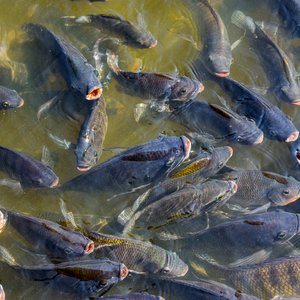Combining fat and sugar in diets leads to increased weight
New research indicates that whether fat in diets is combined with sugar or protein play a role with respect to maintaining body weight. In an experiment carried out at the National Institute of Nutrition and Seafood Research (NIFES) one group of mice were fed corn oil together with sugar while a second group were fed corn oil and protein for 12 weeks. The energy content was equal in both diets and the mice consumed the same amounts of food.
“The results showed that the mice that ate sugar together with fat became significantly fatter than those that ate protein combined with fat. The mice that ate protein and fat had a lower increase in weight than a third group of mice fed a diet with less calories,” says Lise Madsen, researcher in the Seafood and health Research Programme at NIFES
“One reason for the low increase in body weight in mice fed protein together with fat is related to the limited access to dietary sugar in these animals. This leads to the production of energy from fat tissue in order to generate sugar for the brain. Which is a very energy intensive process,” explains Madsen.
Obesity, omega-6 and omega-3
Globally, obesity is a large and growing problem. Corn and soy oils rich in omega-6 fatty acids make up an increasingly large proportion of the western diet while marine omega-3 fatty acids are on a decline, as documented by several scientific papers.
“In further experiments we will examine the effects of fish oils on the development of obesity and investigate how different combinations of main nutrients come into play,” says Madsen
“The development of fat tissue is not determined by the amount of main nutrients in the diet, but rather the interaction between the main nutrients and the levels of the hunger signal cAMP.”
The hunger signal is the key
The protein - carbohydrate ratio in food affects the balance between the two hormones insulin and glucagon in mice. When sugar is consumed, the insulin level rises and when protein is consumed, the glucagon level rises. The hormone balance affects the level of a signal substance called cAMP, which is the hunger signal that is produced in several tissue types in the body that regulates energy circulation.
“cAMP levels rise when protein is consumed and Zinc when carbohydrates are consumed,” explains Madsen.
"In studies using cell-cultures we saw that omega-6 fatty acids repress accumulation of fat when the level of cyclic AMP is high, and conversely that omega-6 fatty acids stimulate the build-up of fat when the level of cyclic AMP is low.
Partners: Institut for Biokemi og Molekyærbiologi, Syddansk Universitet, Denmark, Institutt for Biomedisin, the University of Bergen, Deutsches Krebsforschungszentrum, Germany, and Department of Biosciences, TNO, Nederland.
Contact: Lise Madsen, scientist, National Institute of Nutrition and Seafood Research, NIFES.







